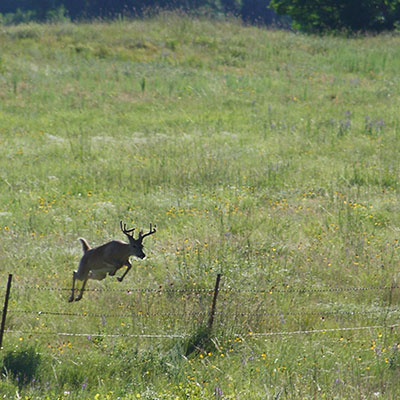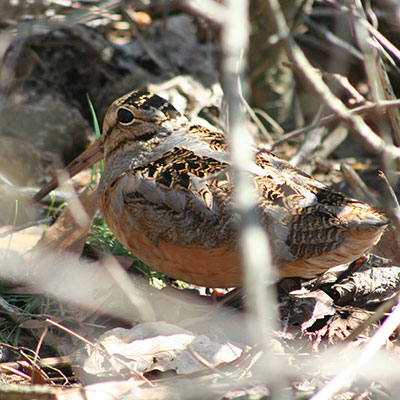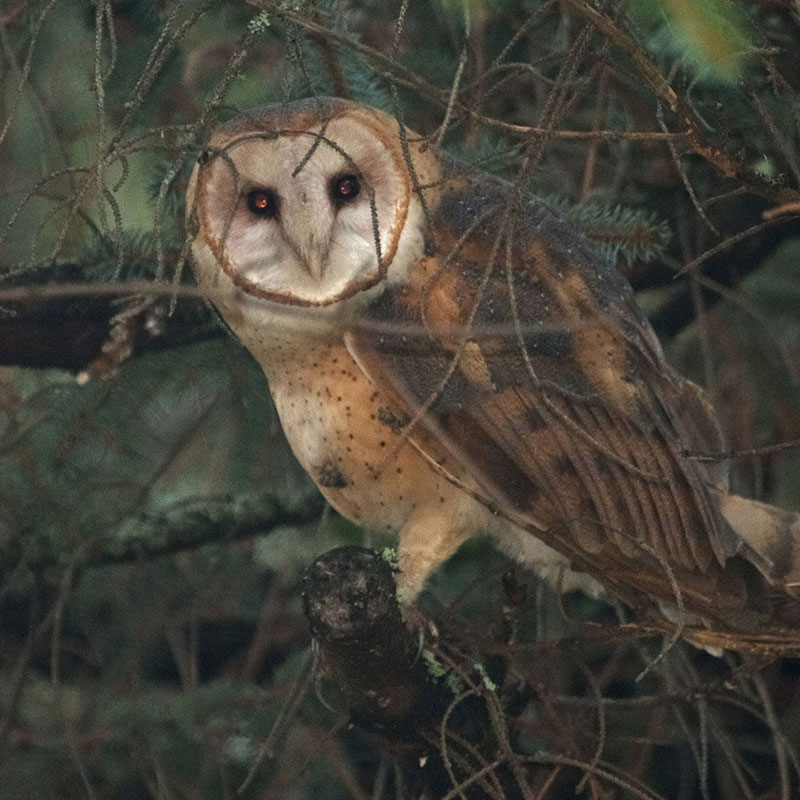Select image to enlarge and view caption.
Drift Plains Region
What makes this region unique
The unique characteristics of the Drift Plains Region shape the wildlife that inhabit it. In this region, you’ll find a space that once supported massive trees and is transitioning from steep hills to small streams. Unlike other regions, the Drift Plains’ wild places contain plants more commonly found farther away, in states like Ohio and West Virginia along the Appalachian Mountains. From fossil-rich cliffs along the Ohio River, to flatwoods that hold water, the area contains many distinct features.
If you travel to the Drift Plains in the spring, you could view streamside salamanders laying their eggs just in time for their young to hatch and grow before the flatwoods dry out for the summer. Also known as “crawfish flats,” the flatwoods serve as a perfect spot for crayfish to thrive. The flatwoods also support the Kirtland’s snake, which you might see using the crawfish burrows, called “chimneys,” as its home.
In areas where trees become more sparse and you begin to find shrubs, grasses, and wildflowers, you could also see least weasels chasing mice, voles, and other small rodents with their agile movements. You may even spot Henslow’s sparrow flying in the grasslands, along with other birds typically found in prairie environments.
The region is also unique in that it is home to fish and wildlife that thrive in its remaining wild places.
State wildlife action planning in the Drift Plains region
In February 2024, partners from the Drift Plains region convened to discuss the ecosystems that are in need of conservation in the region. Then, conservation strategies were built around the most pressing threats to these ecosystems. Additionally, in 2024, we’ll be working with partners to further refine elements of the regional plan. Partners who have not been involved in the work are welcome to participate in the refinement process.
Curious about who has been involved in the process? Check out our list of partners below.
- Thank you, partners!
- American Bird Conservancy
- Bartholomew County SWCD
- Big Oaks National Wildlife Refuge
- Hoosier Environmental Council
- Hoosiers for Fishable Streams
- Indiana Association of Soil and Water Conservation Districts
- Indiana Department of Environmental Management
- Indiana Forest Alliance
- Indiana Sentinel Landscape
- Indiana University Bloomington
- Indiana University Columbus
- International Crane Foundation
- Lewis and Associates Biological Consulting LLC
- Natural Resources Conservation Service
- Oxbow Inc.
- Pheasants Forever / Quail Forever
- Purdue University
- Sam Shine Foundation
- State of Indiana Cooperative Invasive Species Management
- Sycamore Land Trust
- The Nature Conservancy
- U.S. Fish and Wildlife Service
- U.S. Forest Service
Interested in learning more about the progress of the Drift Plains regional plan? Contact Elizabeth Mabee (SWAP@dnr.IN.gov; 463-203-3095).
Conservation at work
- Landowner stabilizes soil and encourages wildlife’s return to the land
In Scott County, an area with a mixture of farmed land and small pockets of native habitat, a landowner decided to reduce erosion in some areas by encouraging native plants to grow and thrive. Wildlife biologist Nate Yazel worked with the landowner to reconstruct the farm property into a quality wildlife habitat. By creating space for pollinator, tree, and shrub plantings, as well as building areas for food plots, Yazel and his partners helped the landowner stabilize his soil and support wildlife’s return to the land.
Now, various Species of Greatest Conservation Need, ranging from woodcocks to Northern bobwhite and Henslow’s sparrows to indigo buntings, have a quality space for nesting. Yazel appreciates how the relationships he forms with landowners impact the wildlife at the property. “When you’re down in this part of the state, you’re likely to encounter landowners who can easily provide a wide variety of habitats to promote a wide variety of wildlife,” Yazel says.
Learn more about the Grasslands for Gamebirds Initiative.

A grassland habitat provides quality forage for a white-tailed deer.

An American woodcock thrives on the edges of forested habitats.

- Jackson County grassland plantings minimize soil loss and create habitat for local barn owls
Near the confluence of the Muscatatuck River and the East Fork of the White River in Jackson County rests some large native grassland plantings. With the help of wildlife biologist Shannon Winks, a landowner worked to conserve the soil and make the former crop fields a quality habitat for barn owls. As Winks designed the seed mixes for the grassland, the landowner placed barn owl boxes in his barns.
Together, Winks and the landowner worked to minimize soil erosion and improve 260 acres of barn owl habitat. Not only did they create a better environment for barn owls, they also built a grassland habitat to support Henslow’s sparrow, a Species of Greatest Conservation Need.
Learn more about how we help landowners.
Learn more about Barn Owls in Indiana.

Barn Owl. Photo courtesy USFWS.

Additional Resources
- Want to learn more about other fish and wildlife that live in Indiana?
- Read about this region in the Indiana State Wildlife Action Plan.
